What Parents Need to Know About the Safe Kids Worldwide Parent Survey on Child Injury
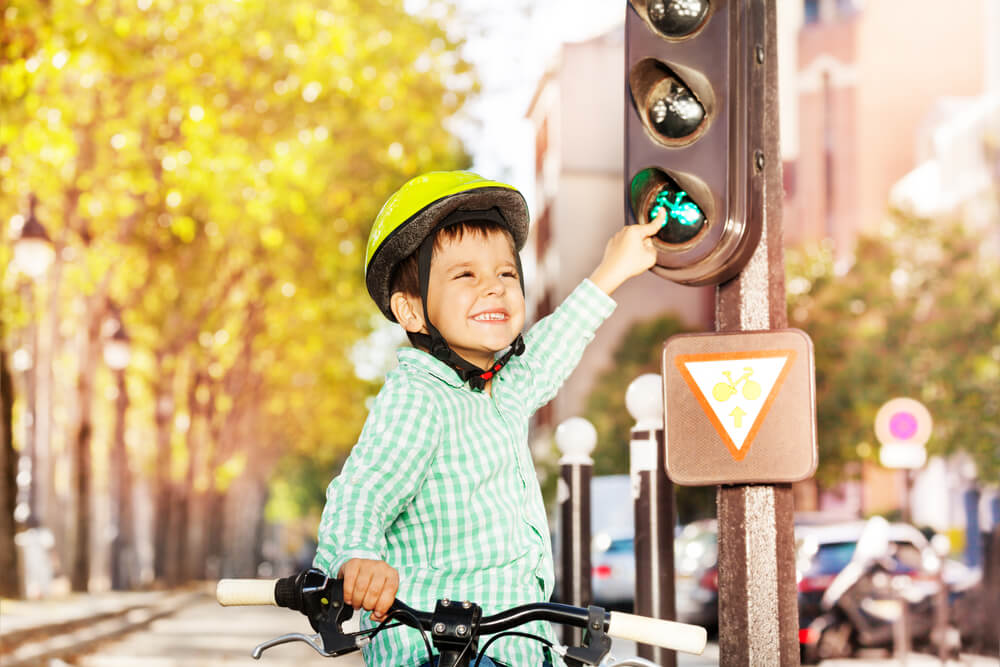
Findings from the 2021 Johnson & Johnson and Safe Kids sponsored study, the National Parent Survey on Child Injury, were recently released. The purpose of the study was to track safety behaviors in order to reduce the risk of injury in kids younger than 10.
The survey monitored parents’ attitudes, beliefs, and behaviors across six key areas. The results of the study showed that parents are generally taking steps to reduce the risk of injury to their children but there is still some work to be done.
Overall, the survey provides valuable insights into the safety practices of parents and gives some information on what we all could be doing better to keep our children safe.
Contents:
- Study Results
- Child Motor Vehicle Safety
- Pedestrian Safety
- Bike Safety
- Water Safety
- Fire Safety
- Poisoning Safety
- How Can You Keep Your Child Safe from Most of these Dangers? There is a Solution
- What These Findings Mean for Parents
Study Results
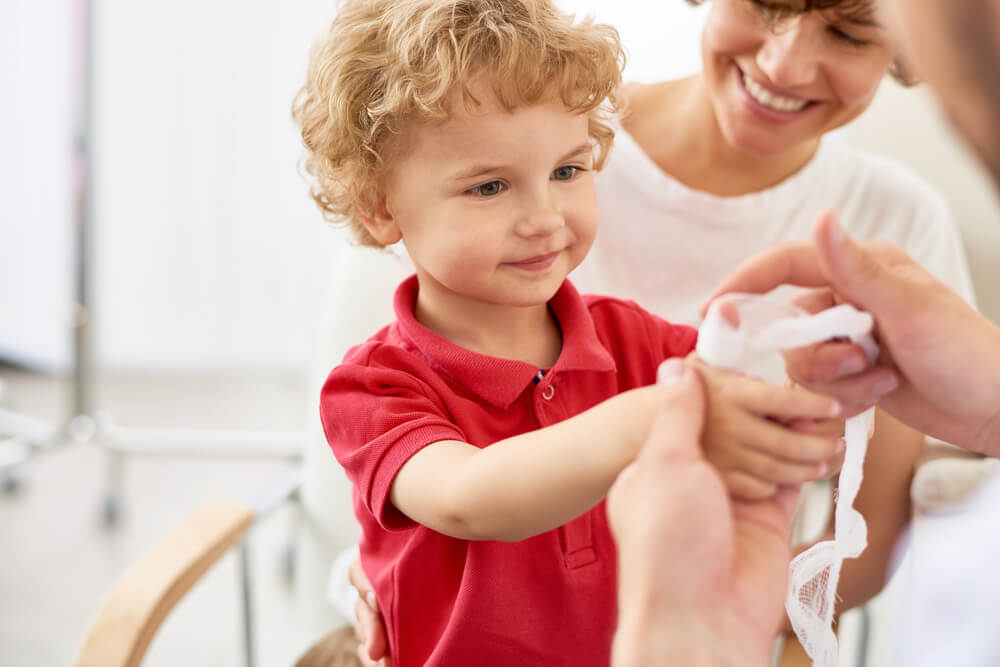
SeventyFour/Shutterstock.com
Unintentional injuries are a leading cause of death among young children, claiming an estimated 3,100 lives each year. These injuries are also responsible for sending 2.5 million kids to the emergency room annually.
Fortunately, many of these injuries are preventable with the proper precautions. While most parents (74%) worry about childhood injuries, the good news is that they also believe that most injuries are preventable (68% of surveyed parents).
When surveyed about how preventable common causes of child injury are, the following percentages of parents believed that these types of accidents were preventable:
- being injured in a car crash—63%;
- getting a concussion while playing sports—67%;
- being hit by a car as a pedestrian or while riding a bike—79 and 83%, respectively
- injuries due to home fires—84%;
- choking on a small toy—90%;
- accidental poisoning—93 to 96%;
- drowning—96%;
- scalding—96%.
To help keep your child safe, be sure to create a safe home environment, teach them about potential dangers, and supervise them carefully.
By taking these steps, you can help reduce the risk of unintentional injury and keep your child healthy and happy. But how do you know where the risks are present? The findings from the study, as detailed below, will give you a better picture of the biggest hazards and how you can keep your child safe.
Child Motor Vehicle Safety

Africa Studio/Shutterstock.com
Here are the key findings from the study as related to child motor vehicle safety.
173 children under the age of 10 die every year in motor vehicle crashes
This statistic is even more heartbreaking when you consider that many of these deaths could have been prevented if the proper safety precautions had been taken. For example, making sure that all passengers are buckled up and no one is riding in the front seat can go a long way towards keeping kids safe in the event of an accident. Similarly, ensuring that all child safety seats are properly installed and used can also help to save lives.
88% of parents believe that child occupant injuries in a motor vehicle accident are preventable
The majority of parents believe that child-occupant injuries in a motor vehicle accident are preventable. This is likely due to the fact that many of these injuries are caused by preventable factors, such as unrestrained or improperly restrained children, unsecured loose items in the car, and distracted driving. While some accidents are impossible to avoid, there are many steps that parents can take to help keep their children safe on the road.
85% of parents report that the child always rides in the back seat
This is likely because they understand the dangers of riding in the front seat, namely that they are more likely to be seriously injured or killed in the event of a collision.
41% of parents never text or use their cellphones while driving
Though many parents believe they can multitask while driving, the reality is that any type of distracted driving can put themselves and their children at risk.
There are an average of 39 hot car deaths among children every year in the US
This number is especially tragic because these deaths are preventable. When a child is left in a hot car, their body temperature can rise to dangerous levels very quickly. This can lead to heat stroke, which can cause organ damage and death.
Unfortunately, these deaths often occur when a parent or caregiver forgets that the child is in the car. These forgetful moments can happen to anyone, which is why it’s important to be vigilant about checking the backseat before leaving the car.
55% of parents say there is no appropriate amount of time to leave a child alone in a vehicle
This is likely due to a number of factors, including the risk of kidnapping, the possibility of a car accident, and the danger of heat stroke. In addition, many parents worry that their child may wander off or be able to reach a hazardous object while unsupervised. As a result, it is not surprising that so many parents feel that it is never safe to leave a child alone in a car.
The likelihood of restraining a child in a car seat or with a seat belt varies widely
Parents are less likely to restrain their child while driving if they are fathers (56% less likely than mothers), identify as Hispanic (80% less likely than those who identify as non-white), have a hosuehold income less than $30,000 (74% less likely), or drive only a few times a week (73% less likely compared to parents who drive daily).
The Takeaway
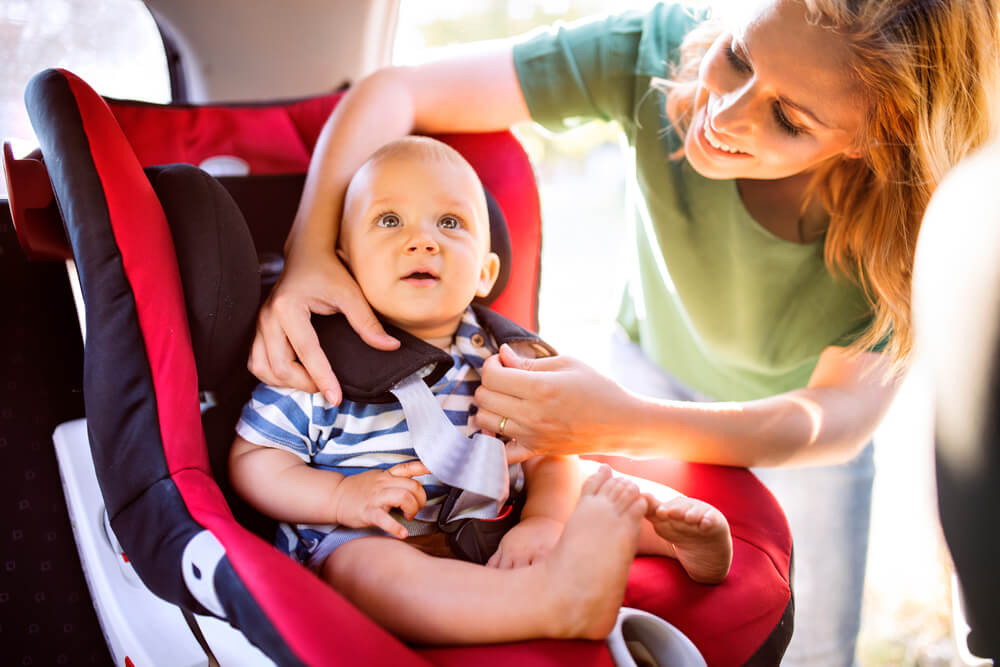
Halfpoint/Shutterstock.com
The good news about these findings: most motor vehicle deaths are preventable, particularly when child restraint systems are used. These have been shown to decrease fatal injuries by up to 71% among infants and 54% among toddlers (and 45% among older children).
You can prevent motor vehicle accidents and injuries by:
- Making sure your child is appropriately restrained.
- Using a car seat or booster seat appropriate to the weight, height, and age of the child.
- Model car safety behavior.
- Avoiding cell phone use and other distractions while driving.
Pedestrian Safety

Photographee.eu/Shutterstock.com
Pedestrian safety is another key element of child safety. 155 children die every year from pedestrian injuries, with 64% involving motor vehicles.
Here are the most important things to know.
Children are more at risk of pedestrian accidents as they don’t yet have the physical or cognitive abilities to judge and react to hazards
Children are still developing their cognitive abilities, which means they may not be able to understand the dangers of certain situations. Additionally, children are more likely to take risks and behave impulsively. This can lead them to run into the street without looking or fail to yield to oncoming traffic. Finally, children are simply less visible than adults, which makes it more difficult for drivers to see them.
89% of parents say their child is not allowed to cross the street without an adult
While it is certainly important for parents to take precautions to protect their children, it is also important for children to learn how to safely cross the street on their own, particularly as they get older.
84% of parents report practicing safety skills like crossing the street with their child
This is a heartening statistic, as it shows that parents are taking an active role in keeping their children safe. However, it is also important to remember that teaching safety skills is just one part of keeping kids safe. Parents also need to be aware of potential hazards in their environment and make sure their children are supervised at all times.
Parents are less likely to report that their child is not allowed to cross the street without an adult if they live in a non-metro area or the child is 6-9 years of age or older
There are likely several reasons for this. In less populated areas, there are fewer cars on the road and less traffic to worry about. Additionally, children who are 6-9 years old are generally more mature and responsible than younger children, so parents may feel more comfortable letting them do things independently.
Finally, older children are less likely to need as much supervision as younger children, so parents may feel that they can give them more freedom.
The Takeaway
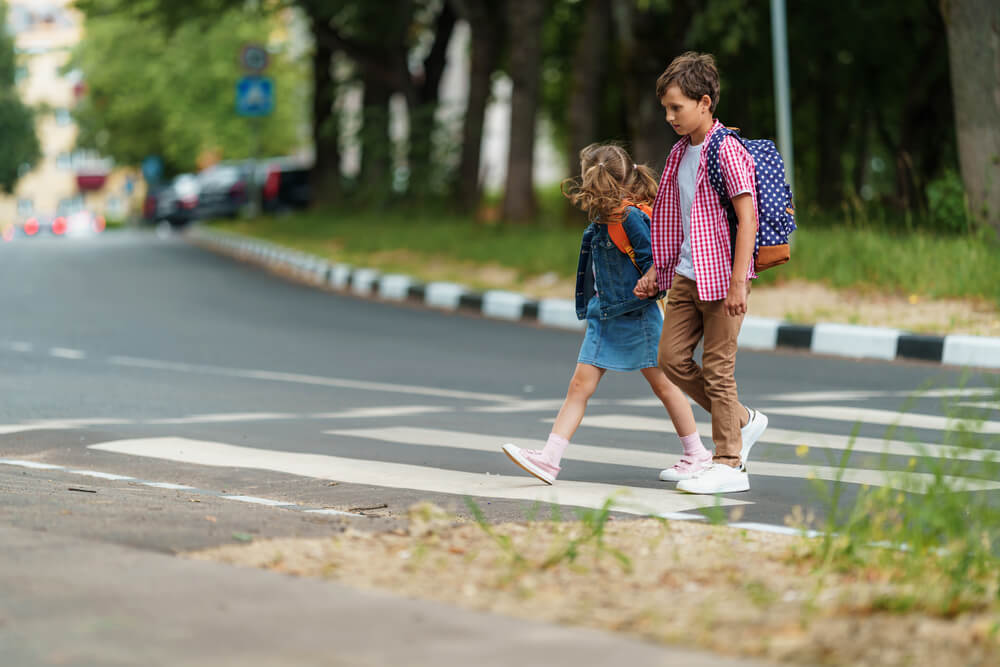
Alexander_Safonov/Shutterstock.com
As any parent knows, keeping children safe is a top priority. When they’re old enough to start exploring the world on their own, it’s important to teach them how to stay safe as pedestrians. Here are a few tips to help keep kids safe when they’re out and about:
- Look both ways before crossing the street, even if there’s a crosswalk or traffic light.
- If possible, walk on paths or sidewalks instead of on the road.
- Pay attention to your surroundings and avoid distractions like cell phones or headphones.
- Be visible by wearing bright clothes or reflective gear if it’s available.
Protect your child when they move along the street, especially when they go somewhere without your accompaniment. Put a kid’s smartwatch on them or download the Findmykids app. With these gadgets, you can see where and at what speed the child is moving, and listen to what is happening around them.
Bike Safety

Photoroyalty/Shutterstock.com
With more children on their bicycles this summer, there are a few key statistics and facts to know about bike safety as well.
18 children die every year from a cycling injury
The number of children dying from cycling injuries is alarming. Every year, 18 young lives are lost due to preventable accidents.
While this number is still far too high, it is a marked improvement from the early 1990s when over 100 deaths were reported annually. There are a number of factors that contribute to this decline, including better safety equipment and increased public awareness.
However, the most important factor has been the introduction of mandatory helmet laws. In many jurisdictions, it is now illegal to ride a bike without wearing a helmet. This simple measure has proven to be highly effective in reducing the number of cycling fatalities.
64% of parents report that their child always wears a helmet
It’s important for parents to educate their kids about the importance of safety gear and to provide them with the resources they need to make safe choices.
33% of parents wear their own helmets
Many people are surprised to learn that only a third of parents said they always wear a helmet when they ride a bike with their child. While most parents believe it is important to wear a helmet, many do not actually follow through and do it themselves.
There are a number of possible explanations for this. It could be that parents feel that their child is more likely to have an accident than they are. Or, it could be that parents believe their child is more likely to be seriously injured if they are not wearing a helmet.
Whatever the reason, this stat highlights the importance of reminding parents to set a good example by always wearing a helmet when they ride with their child.
Parents are two times more likely to enforce helmet-wearing if they are bike riders themselves
This quote makes a lot of sense when you think about it. If parents are bike riders themselves, they understand the importance of wearing a helmet and are more likely to enforce it with their own children.
They know firsthand the dangers of riding without a helmet and want to make sure their kids are as safe as possible. On the other hand, parents who don’t ride bikes may not fully appreciate the risks involved and therefore may not be as diligent about making their kids wear helmets.
Parents are 52% less likely to enforce helmet-wearing if they live in a non-metro area
This is likely due to a number of factors, including the fact that rural areas have fewer bike lanes and paths, and that parents in rural areas are less likely to have experience with biking themselves. Additionally, parents in rural areas may be more likely to view biking as a leisure activity rather than a form of transportation, and thus see helmets as unnecessary. Whatever the reason, this disparity has serious implications for the safety of children in rural areas.
The Takeaway
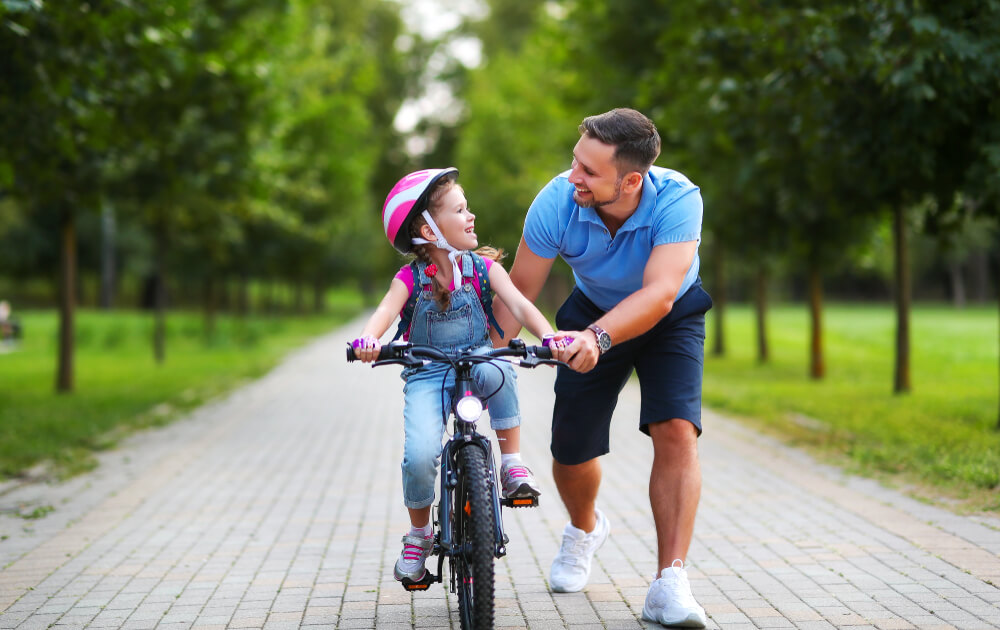
Evgeny Atamanenko/Shutterstock.com
You can prevent bike-related injuries to your child by:
- Making sure your child wears a helmet.
- Explaining the rules of the road and how to apply to bicycles.
- Modeling safe behaviors, like wearing a helmet, yourself.
Water Safety

mat N jujulicious/Shutterstock.com
Spending time near water, whether it’s a lake, swimming pool, or some other body of water, is a popular pastime, particularly in the summer months. Unfortunately, drowning remains a leading cause of death among children under the age of 10. 576 children younger than 10 die each year from unintentional drowning.
Here are a few more key statistics to know.
75% of parents who indicated their child could swim reported that the child could float or tread water for one minute or more
This quote highlights the importance of water safety and the need for parents to ensure that their child knows how to swim properly in order to avoid potentially dangerous situations.
60% of parents who spend time near water with their families always appoint a water watcher
Drowning is the leading cause of death for children ages 1–4, and parental supervision is a critical part of keeping kids safe around water. Appointing a water watcher provides an extra set of eyes to help monitor children, and it can help to prevent tragedies.
Only 51% of children know how to swim
One of the best ways to prevent drowning is to teach children how to swim. There are a number of reasons why this may be the case. First, many parents do not know how to swim themselves and so they do not see the importance of teaching their children. Second, swimming lessons can be expensive and may not be accessible to all families.
Please, read How to Teach Your Child to Swim Quickly and Without Fear.
The Takeaway
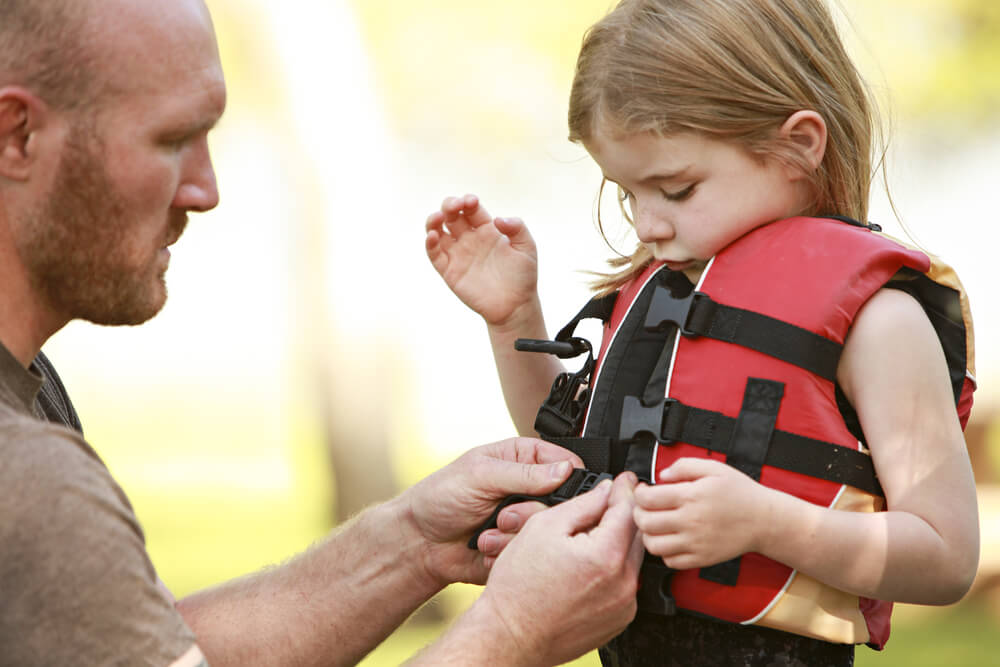
Collin Quinn Lomax/Shutterstock.com
As a parent, you can reduce the likelihood of drowning and other water-related injuries by:
- Making sure your child knows how to float or tread water for at least a minute.
- Getting certified in CPR.
- Knowing basic water rescue skills.
- Ensuring that children where US Coast Guard-approved life jackets when on a boat.
- Modeling safe water behaviors.
- Assigning a water watcher when with your child at a pool or other body of water.
Fire Safety

Daniel Jedzura/Shutterstock.com
Burns can result from many types of incidents, including direct contact with flames, hot substances, and hot objects. However, house fires account for about 90% of all fire- and burn-related deaths among kids younger than 10. Fires spread and start quickly so it’s important to be aware of basic safety measures to keep everyone safe.
Here are some numbers to pay attention to.
47% of scald injuries are from hot water
The study also found that the majority of scald injuries occur in the home, with children under the age of four being the most vulnerable. These findings highlight the importance of taking precautions to prevent scalding, such as setting a water heater to no more than 120 degrees Fahrenheit and using caution when handling hot liquids.
35% of parents with a fire escape plan in place say that it has been a year or more since they practiced in
This is a troubling statistic, as it suggests that many families are not adequately prepared for a fire emergency. There are a number of reasons why this may be the case, but the most likely explanation is simply that people forget to practice their fire escape plan.
87% of parents who have smoke alarms in the home have one in or outside of each bedroom
A smoke alarm is an important piece of safety equipment in any home, and it is especially important to have one in or near each bedroom. This is because smoke can spread quickly through a home, and the alarm will give everyone ample warning to evacuate the premises.
The Takeaway
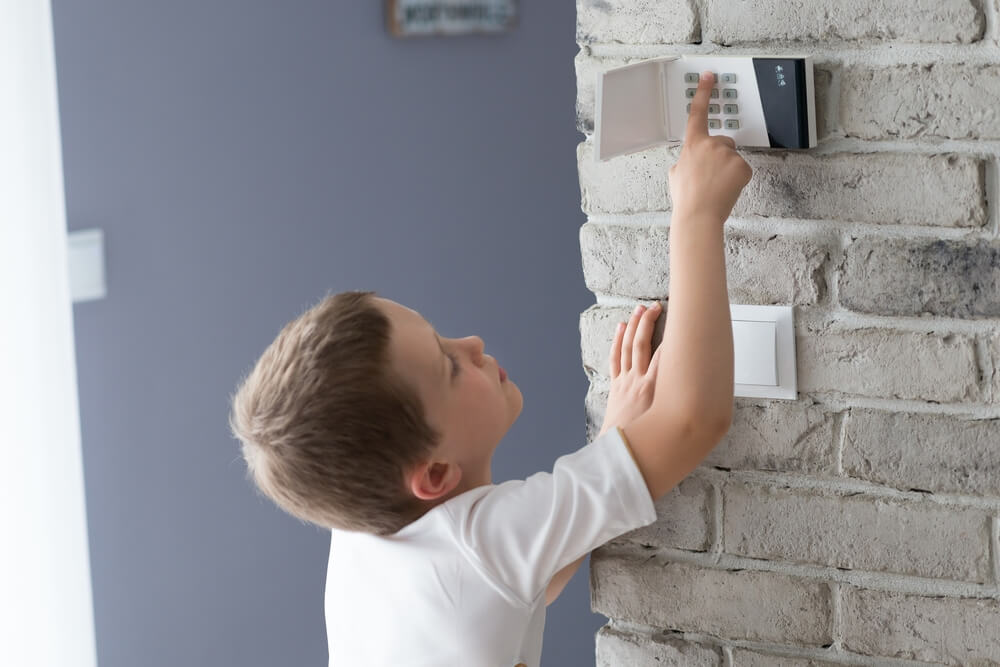
Daniel Jedzura/Shutterstock.com
To reduce the risk of death due to a home fire or other heat-related incidents, like scalding, parents should:
- Ensure that there are working smoke alarms on every level of the home.
- Test smoke alarms once a month.
- Put a fires escape plan in place and practice it at least twice a year.
- Set water heaters in the home to 120 degrees F.
- Test the water with your elbow or wrist before putting your child in the tub.
Poisoning Safety
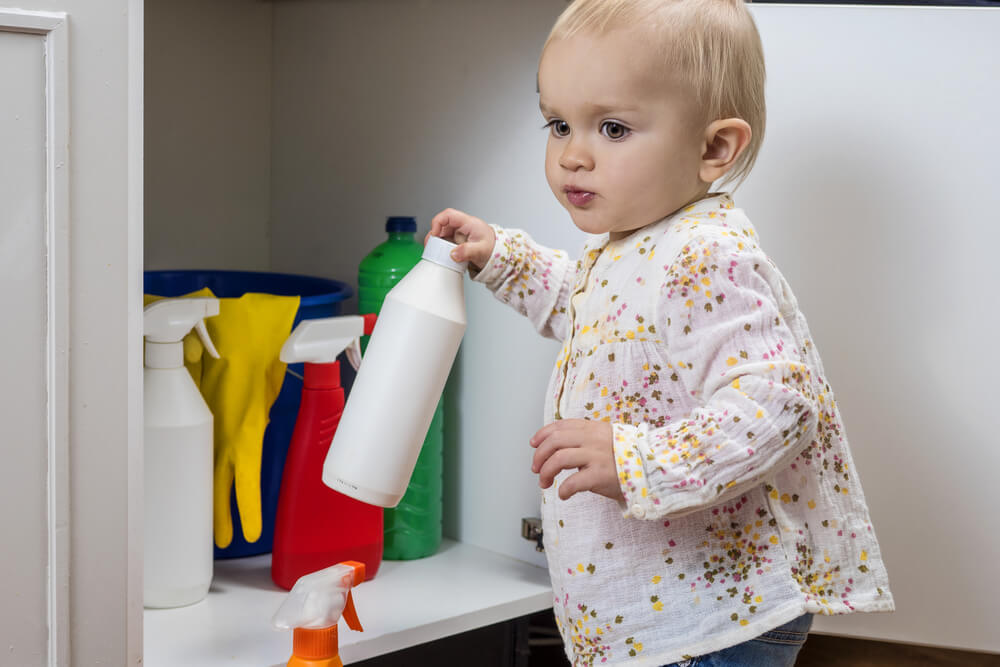
Red pepper/Shutterstock.com
Poisoning is a risk for every member of the household, but especially for very young children (particularly babies and toddlers who are recently mobile). These young kids are naturally curious and have a tendency to ingest objects or put them in their mouths, making poisoning a very real risk.
53 children under the age of 10 die each year from unintentional poisoning
The vast majority of these deaths are caused by common household products, such as cleaners, medicines, and cosmetics. Unfortunately, these products are often left within reach of young children, who may not be aware of the dangers they pose. In addition, many parents are unaware of the risks associated with these products and fail to take proper precautions.
The most common factors related to poisoning include inadequate supervision, inappropriate storage of medicine and household products, and non-child-resistant packaging
Inadequate supervision is often a major issue, as children can easily get into medicine and household products if they are not properly supervised. Additionally, inappropriate storage of these items can also lead to accidental poisoning, as children may be able to reach them if they are not stored properly.
70% of parents have CO alarms installed in the home
if inhaled, carbon monoxide can cause headaches, dizziness, nausea, and even death. Because it is impossible to detect without an alarm, having a CO detector in your home can help to keep your family safe.
The Takeaway

Kostikova Natalia/Shutterstock.com
To prevent poisoning:
- Ensure that carbon monoxide alarms are installed and regularly tested in the home.
- Store all medications and cleaning supplies in a location where children cannot reach them.
- Store cleaning products and medicine above head only.
- Keep the poison help number handy.
How Can You Keep Your Child Safe from Most of these Dangers? There is a Solution

EZ-Stock Studio/Shutterstock.com
Modern technologies provide parents with a wide range of devices and utilities that can help ensure the safety of the child not only at home (such as smoke detectors and fire alarms), but also outside.
We are talking about the Findmykids app, so popular among parents. It works both with smartphones and with GPS watches.
The main advantage of the service is a wide range of functions that provide comprehensive protection for the child (both online and offline):
- Accurate geolocation and movement history: see where your child is now and where they was during the day, how fast they move.
- Sound around: listen to what is happening in the environment of the child.
- SOS Button: Receive an instant loud signal from your child when they need your help in an emergency.
In addition, the application provides complete confidentiality and data protection: all user information is transmitted and stored in encrypted form in compliance with the laws of the countries where the service is used, the certificate of compliance with kidSAFE Internet security and privacy standards and the GDPR policy. No “third parties” have access to it.
Protect your child right now by downloading the free version of the application from the AppStore or GooglePlay.
What These Findings Mean for Parents

ESB Professional/Shutterstock.com
The data shows that the majority of child injury fatalities are caused by preventable accidents. This means that parents need to be more vigilant about safety in the home and in other settings where their children are present.
There are many simple steps that parents can take to reduce the risk of child injury, such as installing safety gates, use safety technologies like Findmykids app or GPS wathces for kids, and keeping dangerous objects out of reach.
Education is key. By taking these precautions, you can help to keep your children safe from harm!
The picture on the front page: Sergey Novikov/Shutterstock.com
Проверьте электронный ящик



















